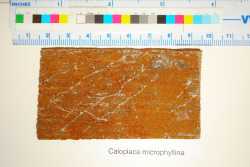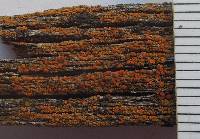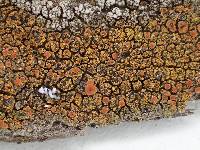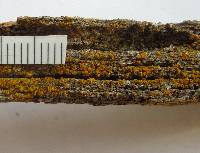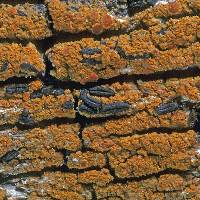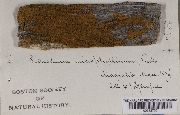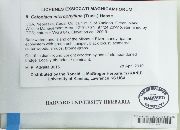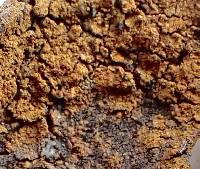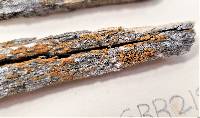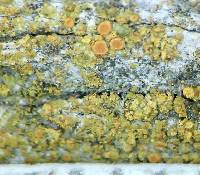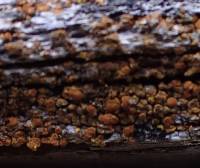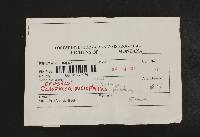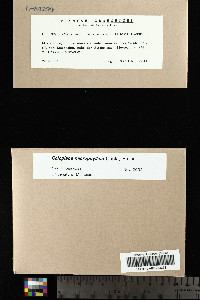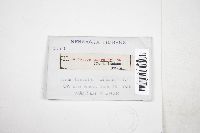
Consortium of Lichen Herbaria
- building a Global Consortium of Bryophytes and Lichens as keystones of cryptobiotic communities -
- Home
- Search
- Images
- Species Checklists
- US States: O-Z >
- US National Parks
- Central America
- South America
- US National Parks
- Southern Subpolar Region
|
|
|
|
Family: Teloschistaceae
[Caloplaca microphyllina (Tuck.) Hasse, morePlacodium microphyllinum Tuck., Villophora microphyllina (Tuck.) S.Y. Kondr.] |
Nash, T.H., Ryan, B.D., Gries, C., Bungartz, F., (eds.) 2007. Lichen Flora of the Greater Sonoran Desert Region. Vol 3. Life habit: lichenized Thallus: crustose, areolate or sub-squamulose, margin abrupt at edge, without elongated lobes; prothallus: absent surface: orange, smooth, sorediate soredia: granular, in delimited or irregular, laminal or marginal, irregular soralia cortex: cellular, 16-35 µm thick, granules absent; medulla without granules Apothecia: adnate, 0.2-1 mm, lecanorine disc: orange, flat, epruinose margin: persistent, slightly raised; thalline margin present, concolorous with thallus; proper margin visible, concolorous with disc or little lighter than disc parathecium: cellular (paraplectenchymatous) including exciple below hypothecium epihymenium: golden, K+ red, C- hymenium: hyaline, 55-70(-85) µm tall paraphyses: 2-3 tip cells slightly swollen, frequently branched; subhymenium hyaline asci: cylindrical, 8-spored ascospores: hyaline, 2 locules, ellipsoid, (10-)11-14 x (4-)5.5(-7) µm, isthmus 3-4 µm, spore end wall thin Pycnidia: present, mostly immersed, ostiole orange Spot tests: apothecial margin K+ red, C-; thallus K+ red, C- Secondary metabolites: parietin, fallacinal, emodin, and teloschistin. Substrate and ecology: on wood or bark World distribution: Europe, Africa and North America Sonoran distribution: southern California, Arizona, Baja California, Baja California Sur, western Chihuahua, and Sonora. Notes: Caloplaca microphyllina is a common species is characterized by the distinctly subsquamulose dark orange thallus usually without a prothallus:. The soredia are about the same color as the thallus and the apothecia are dark orange. Caloplaca persimilis has a tan to greenish orange thallus that originates under the surface of the substrate and the soredia are tan-orange. Species 5 is very similar to C. microphyllina but has globose isidia and no soredia. |
|
|
|
Powered by Symbiota



